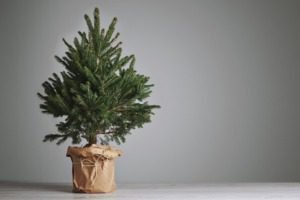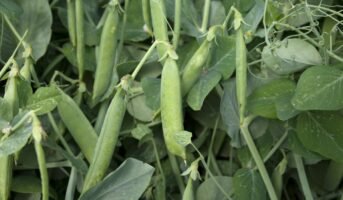A Christmas tree is a decorated tree associated with Christmas celebrations, usually an evergreen conifer such as spruce, pine or fir or an artificial tree with a similar appearance. In Western Christian tradition, Christmas trees are decorated differently depending on the country on days such as First Advent and Christmas Eve. The same faith practice states that the two traditional days for Christmas decorations are: Christmas trees are put up on Twelfth Night and, if not removed on that day, some denominations end the Christmas and Epiphany seasons with Candlemas.
See also: Hemlock trees: Tips to grow, care
Christmas tree: Key facts
| Botanical name | Araucaria columnaris |
| Common Name | Cook pine, New Caledonia pine, Coral reef araucaria, Cook araucaria, Columnar araucaria |
| Family | Araucariaceae |
| Native areas | Central Europe and the Baltic states |
| Plant type | Tree |
| Mature size | 6 to 7 foot |
| Sun Exposure | Bright but indirect sunlight |
| Soil type | Well-drained, loamy soils |
| Bloom time | May to June |
| Leaves type | Conical shape and dense, dark-green leaves that are flat and needle-like. |
| Edible part | Leaves |
| Flower Colour | Greenish-white |
| Toxic | Mildly |
Christmas tree: Care tips
To keep Christmas tree plants healthy and beautiful throughout the holiday season, a few essential measures are involved in their care. The following are some broad recommendations:
Selecting the correct tree: Choose a young tree with vivid green needles. Steer clear of trees with brown needles or a musty smell. To detect excessive needle shedding, shake the tree.
Watering: To ensure the tree receives enough moisture, place a reservoir at its base.
- To avoid the trunk drying out, maintain the water level above the tree’s base.
- Every day, especially in the first week, check the water level because recently cut trees can take a lot of water.
Location: Keep the tree away from direct heat sources, including fireplaces, radiators or heating vents, as these will quickly dry out the tree. Keep the tree in a cool room to slow down the drying process.
Trimming: Just before submerging the tree in water, trim a small, thin slice from the base of the trunk. In doing so, the tree can absorb water more efficiently. Cutting at an angle can decrease the amount of water absorbed, so cut straight through.
Decorating: Use LED lights to minimise the chance of the tree drying out because they produce less heat. Take care when positioning lights and ornaments to prevent breaking the branches.
Humidity: Keep the room’s relative humidity higher. A small pan of water placed next to the tree or using a humidifier can accomplish this.
Keep an eye out for pests: Check the tree for insects before bringing it indoors. Check for any unwelcome visitors by shaking the tree.
Disposal: When it comes time to get rid of the tree, see your community’s policies regarding recycling or pick-up services. There are dedicated Christmas tree recycling initiatives in several places.
Precautions for safety: To lower the chance of fire, turn off the tree lights before leaving the house or going to bed. To keep the tree from becoming a fire hazard, ensure the tree stand is supplied with water.
Christmas tree: How to grow?
Preparation and a longer-term commitment are necessary when growing a Christmas tree. The general procedures for growing a Christmas tree are as follows:
Choosing the suitable tree species
Pick a Christmas tree species compatible with your soil type and climate. Scotch pine, Norway spruce, Douglas fir and Fraser fir are popular options.
Selecting a location
Choose a spot that receives enough sunlight and has soil that drains effectively. Make sure there is sufficient room in the location for the tree to reach its full height.
Planting
- Plant the tree in the right season. This typically occurs when the tree is dormant, in late fall or early spring.
- Create a hole slightly bigger than the tree’s root ball.
- Insert the tree into the hole, carefully setting it at the same depth as at the nursery.
- Give the tree copious amounts of water after adding soil to the hole.
Watering
Maintain a consistent moisture content in the soil, particularly in arid spells. The type of tree and the climate where it is planted affect how much water it needs.
Mulching
Mulch the area around the tree to control soil temperature, weeds and moisture retention.
Pruning
Prune the tree as necessary to keep it in good form and promote strong development. Take away any unhealthy or dead branches.
Preventing insect infestations
Consistently check the tree for pests and illnesses. If organic or chemical therapies are required, you can consider using them.
Treating
To encourage wholesome development, apply a balanced fertilizer in the spring. As directed by the fertiliser’s box, follow the dosage prescribed.
Protecting from Wildlife
If one resides in a region where wildlife may browse on young trees, you should consider putting up fences or tree wraps as preventative measures.
Culturing a Christmas tree may take multiple years, contingent upon the species. Give the tree time to reach a good size before using it as a Christmas tree.
Christmas tree: Uses
There are several uses for Christmas trees, both during and after the holidays. These are a few typical applications:
Surrounding: Traditionally, Christmas trees are mainly used for festive decorating. Families frequently decorate their trees with lights, tinsel, decorations and tree toppers.
Symbol of celebration: Christmas trees are a prominent feature of Christmas celebrations in many cultures worldwide, serving as a symbol of the holiday season.
Presents and gifts: Many people put wrapped presents and gifts beneath the Christmas tree. During the holidays, exchanging gifts with one another is a custom.
Festive atmosphere: Christmas trees add to the joyous ambience in residences, public areas and businesses. Their presence contributes to the atmosphere being cosy and welcoming.
Neighbourhood activities: Christmas trees are frequently utilised at get-togethers and activities in the neighbourhood. Large decorated trees may be seen in town squares, retail malls and public areas during holiday celebrations.
Handmade items & crafts: Some individuals use Christmas trees or their branches for do-it-yourself projects and crafts after the holidays. This could entail making potpourri, garlands, or wreaths.
Wildlife habitat: Repurposed Christmas trees are gathered and used in some places to build habitats for various wildlife. They can be used to make brush piles for birds and other animals or put in ponds or lakes to give fish cover.
Mulch and compost: There may be recycling programs for Christmas trees in some areas, whereby old trees are crushed and turned into compost or mulch. After that, this material can be applied to landscaping and gardening projects.
Woodworking and carpentry: Some people recycle Christmas trees by converting them into wood for minor carpentry or woodworking projects.
Firewood: To provide warmth and ambience to fireplaces and outdoor fire pits, use dried Christmas tree wood.
Christmas tree: Toxicity
Natural Christmas trees, such as pine, fir and spruce, are generally non-toxic and safe for indoor use during the holiday season. The needles and bark of these trees are not known to be harmful to humans or pets. However, it is essential to remember that some people may experience mild allergic reactions to the scent or resin of the tree.
FAQs
How did the tradition of decorating Christmas trees begin?
The decorating of Christmas trees is believed to have originated in Germany in the 16th century.
When is the best time to buy a Christmas tree?
The best time to buy a Christmas tree is typically in early December when there is a wide selection, but it can vary based on local availability.
How do you care for a live Christmas tree?
Keep your tree well-watered, away from heat sources and limit its time indoors to prevent needle shedding.
Can a Christmas tree be recycled after the holidays?
Yes, many communities offer Christmas tree recycling programs. Check with your local waste management or environmental agency.
What are the popular types of Christmas trees?
Common choices include Douglas fir, Fraser fir and Balsam fir. Each has its own shape, needle retention and fragrance characteristics.
How tall should a Christmas tree be for a living room?
Measure the height of the ceiling and choose a tree at least one foot shorter to allow space for the tree topper.
Are artificial Christmas trees environmentally friendly?
Artificial trees can be reused for many years, but they are typically made of non-biodegradable materials, so their environmental impact depends on factors like production and disposal.
What is the significance of the Christmas tree topper?
The tree topper is often a star or angel symbolising the Star of Bethlehem or the heralding of good news.
Can we replant a live Christmas tree after the holidays?
Sometimes, live Christmas trees with roots can be replanted, but they require special care and attention to ensure survival.
Why do people decorate Christmas trees with lights?
The tradition of using lights on Christmas trees is said to symbolise the lights of the stars and has its roots in the practice of putting candles on trees in the 18th century.
| Got any questions or point of view on our article? We would love to hear from you. Write to our Editor-in-Chief Jhumur Ghosh at jhumur.ghosh1@housing.com |
Priya Banerjee, a writer with a keen eye on the property market, she deciphers the ever-changing trends in residential real estate. Priya excels at simplifying complex real estate terms, making them easy for everyone to understand. Her well-researched advice helps buyers and investors understand complex topics.












